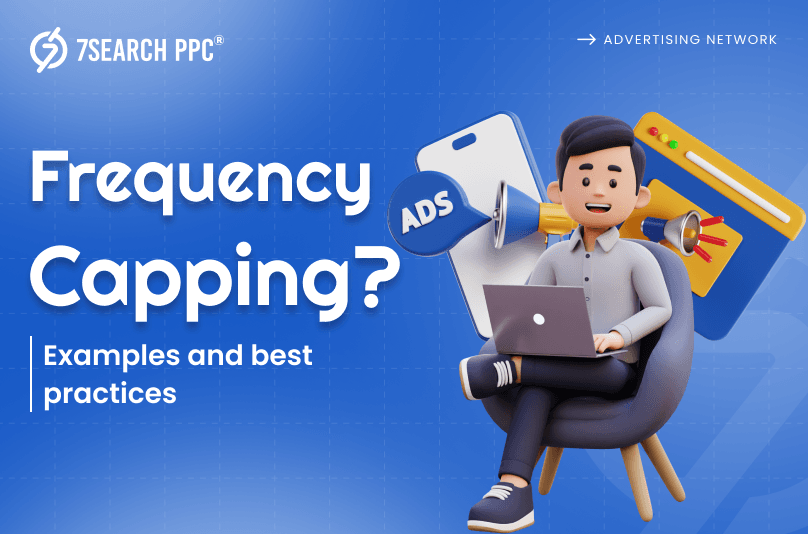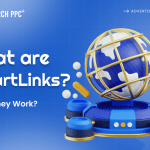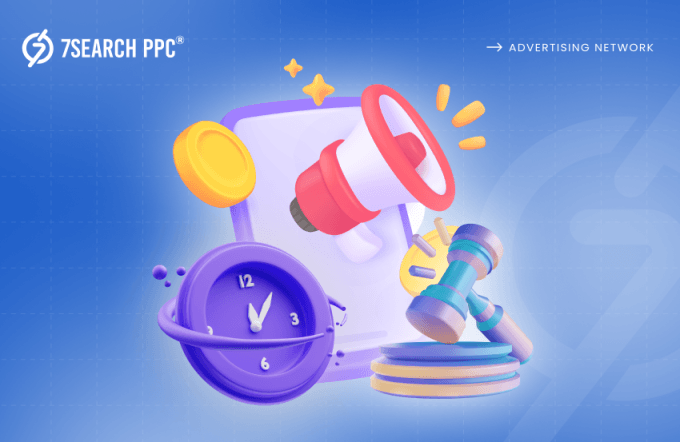Oh god! Urgh…again! I’m at my wit’s end! This is the tenth time I have watched this ad in a day. It’s enough! Have you ever had this feeling? We know that seeing the same ad repeatedly can be frustrating. Sometimes, users hate the brand after seeing online ads multiple times. As marketers, we always aim to protect the user’s experience by keeping ads relevant and not showing them too often so they don’t get annoyed with the brand. Now, you will say, is that possible? The answer is yes. With frequency capping, we can limit how often users see the same ad to avoid frustration.
This is a PPC advertising technique that limits the number of times an individual user sees a particular ad within a specific timeframe. This is done to prevent ad fatigue, which occurs when users become so overwhelmed by an ad that they begin to ignore it.
So, what is the point of showing digital ads if we know that they will ultimately be ignored? It is a waste of money, effort, and time. However, you can save all of these if you understand frequency capping better. Check out this blog and improve your PPC campaigns by understanding the benefits of limiting ad frequency.
Ad Repetition? Frequency Capping to the Rescue
There are two types of online ads from a user perspective. The first type is when a user becomes bored after seeing the ad, indicating the ad itself has failed to attract the audience effectively. The second type occurs when users feel annoyed, not because of the ad content but due to its repetitive display. As an advertiser, you can control boredom and annoyance by making your ads more creative and using frequency capping.
Frequency or repetition capping is a method used in digital advertising to control how often the same ad is shown to a person. For instance, if you set a limit of three times a week, that means a person will see the ad no more than three times in that week. This helps prevent ad fatigue, where people get tired of seeing the same ad too often, which can make them annoyed or less interested.
This strategy helps advertisers create a better user experience and keep their online ads effective, which means more engagement and better results.
The Positive Impact of Frequency Capping on Ad Campaigns
We know that the competition is high; if you don’t reach your audience, your competitors will. Fair enough! It’s better to engage your audience with one or two attempts rather than annoy them with repetitive messages. Here are some of the positive impacts of frequency capping:
Controls Ad Fatigue
Frequency capping helps limit how often the same ad is shown to the same person. When users see the same ad too many times, they may get annoyed or ignore it, which leads to ad fatigue. Advertisers can keep their messages fresh and engaging by applying repetition capping to their digital advertising efforts. This strategy makes sure that viewers remain interested and responsive to their ad campaigns without feeling overwhelmed.
Increases Budget Efficiency
If you keep focusing on the same audience, you will probably not get the desired results, which will also drain your ad budget. Frequency capping ensures that ad spending is used wisely by preventing excessive impressions to the same audience. Instead of wasting money on repeatedly showing the same ad, advertisers can allocate their budget more efficiently. This means that the same budget can reach a new audience, and who knows, this could lead to higher attention and conversion rates as fresh eyes see their messages.
Better User Experience
A good user experience is essential for any successful advertising campaign. Frequency capping helps maintain a positive interaction by preventing users from being bombarded with the same video or display ads. This thoughtful approach to advertising makes it more likely that users will appreciate the content they see. Ultimately, a better user experience builds a more favorable perception of the brand, which turns into increased brand loyalty.
Optimizes Campaign Performance
Want to increase CTRs and improve the effectiveness of your ad campaigns? This won’t be possible if your ads frustrate your audience. However, by changing your ad strategy and maintaining a reasonable time gap between repeated ads, you can achieve better results.
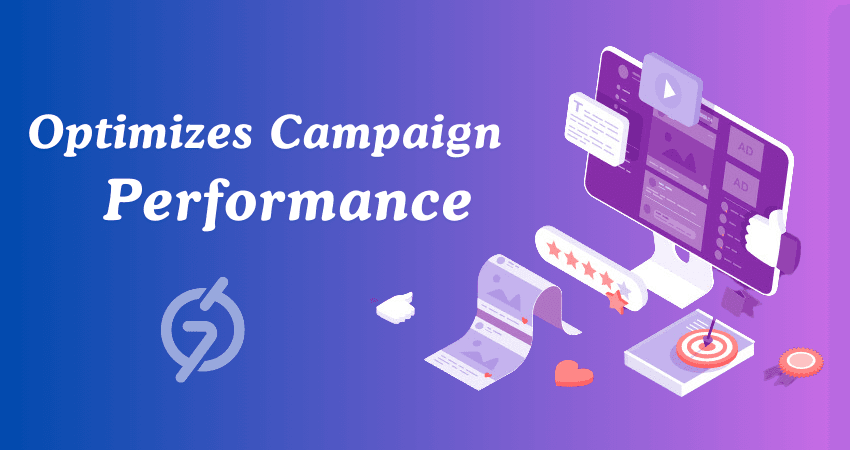
Frequency capping enhances campaign effectiveness by managing how frequently ads are shown. It helps ensure that ads are seen by a diverse audience rather than just a few people repeatedly. This diverse strategy can lead to higher engagement rates, as users are more likely to pay attention to new and relevant ads. In turn, this improved engagement can lead to overall success for advertising campaigns.
The Many Faces of Frequency Capping: A Look at Its Various Types
Frequency or repetition capping is an important ad delivery strategy in PPC advertising that controls how often a specific ad is shown to a user within a certain time frame. Although it seems simple, frequency capping is not limited to a single type. You need to determine which one is perfect for your objectives. Here are some types for better understanding:
Cap Impression Frequency
Cap impression frequency limits the number of times an ad is shown to the same user within a specific period. This strategy helps advertisers avoid disturbing users with repetitive video or display ads, improving user experience. For example, if the cap is set to five impressions per day, a user won’t see the same ad more than five times in a single day. Advertisers use frequency capping in their ad campaigns to:
- Improve ad performance
- Reduce ad fatigue
- Make campaigns more effective
Cap View Frequency
Cap view frequency controls how often a user views a complete video ad or interacts with the ad. It’s similar to impression capping but focuses on engagement. By limiting how often a user interacts with an ad, advertisers prevent overexposure and maintain audience interest. For instance, if a user watches a display or video ad twice, the system might stop showing that ad to them again for a set time, which preserves ad relevance and maintains the freshness of the message.
Time Capping
Time capping restricts the frequency of ad exposure during specific time frames. It allows advertisers to manage when and how frequently ads appear, such as limiting an ad to show every 60 or 120 minutes. This approach ensures ad fatigue and prevents the audience from feeling furious by online ads within short intervals. Time capping maintains a balance between ad visibility and user experience. This strategic balance makes ad campaigns more effective and engaging.
Dayparting
Dayparting, or time-based targeting, refers to scheduling ads to appear during specific times of the day or week. It helps advertisers display ads when their target audience is most active or likely to engage and act. For example, a food delivery ad might be shown around lunchtime or dinner. This strategy ensures higher engagement by reaching users at optimal times. We can say that this strategy is close to time capping.
Illustrative Examples of Frequency Capping
When we are new at something or when things can’t work, then it’s better to learn from others for better results. Here are some illustrative examples of how frequency or repetition capping can be implemented across different scenarios:
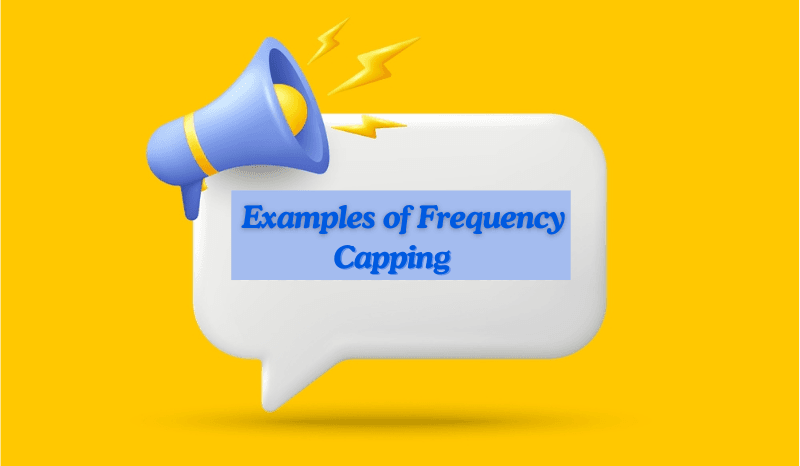
Amazon Prime Day Campaign
Scenario:
During Amazon’s annual Prime Day, the company runs an extensive advertising campaign to promote its Prime membership and exclusive deals.
Here are the Campaign Details:
- Objective: Increase sign-ups for Amazon Prime and drive sales during Prime Day.
- Channel Used: Display ads, social media ads, and video ads across various platforms.
Frequency or Repetition Capping Implementation Strategy:
- Display Ads: Amazon sets a frequency cap of 4 impressions per user per week across all display networks. This means an audience can see the Prime Day ad a maximum of four times a week.
- Social Bar Ads: Amazon focuses on limiting exposure to 2 impressions per user per day on platforms like Facebook and Instagram to ensure users don’t feel bored by looking at the same message.
- Video Ads: On platforms such as YouTube, Amazon limits video ads to one per session to ensure that users watching multiple videos do not repeatedly encounter the same Prime promotion.
Outcome?
- The audience appreciates seeing the ad without feeling bombarded. They receive timely reminders about Prime Day without excessive repetition.
- The campaign sees a higher click-through rate (CTR) and conversion rate. By the end of Prime Day, Amazon reports a significant increase in Prime sign-ups and sales.
The Home Depot
Scenario:
The Home Depot wanted to increase sales of its spring home improvement products during the seasonal peak.
Here are the Campaign Details:
- Objective: Increase traffic to online stores and boost online sales for seasonal products.
- Channel Used: Social media platforms and other digital platforms.
Frequency or Repetition Capping Implementation Strategy
The Home Depot implemented a frequency cap of 3 impressions per user per week across various online advertising channels, including social media and display ads.
Outcome?
- The campaign resulted in a magnificent increase in online sales during the spring season.
- By limiting ad exposure, The Home Depot received positive feedback from consumers about the relevance and creativity of their ads.
Spotify: Yearly Wrapped Campaign
Scenario:
Spotify launched its annual “Wrapped” campaign, highlighting users’ listening habits over the past year.
Here are the Campaign Details:
- Objective: To encourage users to share their platform activity on social media
- Channel Used: Only social media platforms.
Frequency or Repetition Capping Implementation Strategy
- Spotify implemented frequency capping to limit impressions to 3 times per user per week for the Wrapped ads on social media platforms.
Outcome?
- The campaign saw over 1 billion shares of Wrapped content across social media, significantly increasing user engagement and brand visibility.
- Following the campaign, Spotify reported a satisfactory increase in new subscriptions as users were excited to explore the platform further.
Effective Frequency Capping: Tips from 7Search PPC
We have been active in digital advertising since 2018. We better know how the audience reacts after seeing an online ad frequently. Here are some best practices for implementing frequency or repetition capping:
Begin with a Low-Frequency Limit
You can start by setting a conservative cap on how often your ads are shown to the same person. This means limiting the number of times an individual sees your ad in a given time frame. A lower frequency cap can help avoid annoying potential customers and also ensure they remain receptive to your message. This well-cautious capping approach allows you to collect data on how your target audience responds before making any adjustments.
Give Priority to Your Audience’s Preferences
Adjust your frequency cap based on the preferences and behaviors of your target audience. Various age groups may react differently after being exposed to the same advertisement multiple times. For instance, a younger audience (so-called Gen Z) might tolerate more frequent ads than an older generation. You need to analyze your audience’s response and engagement rates to find the right balance that maximizes their interest without overwhelming them.
Match Limits with Campaign Goals
You must make sure that your frequency cap matches the goals of your digital advertising campaign. If you want to increase brand awareness and visibility, consider using a higher frequency to create a lasting impression. On the other hand, if your aim is to increase conversions, a lower frequency may lead to more meaningful engagement. It’s important to understand your objectives in order to set appropriate limits.
Consider Different Ad Formats
When setting frequency caps, it’s important to consider the type of ad format you are using. For instance, video ads may require a higher frequency as they tend to be more engaging, while static display ads might need a lower cap to prevent ad fatigue. Adjusting the frequency based on the ad format can improve user experience and effectiveness.
Adapt to Changing Situations
Be flexible and always ready to adjust your frequency caps based on seasonal trends and specific contexts. For instance, during holidays or special events, people may be more open to ads and might benefit from seeing them more frequently. Conversely, during quieter times, reducing frequency can prevent irritation and improve the overall effectiveness of your ad campaign. Make sure to regularly review and refine your strategy as circumstances change.
Conclusion
Frequency capping is a helpful strategy for advertisers to avoid showing the same ad too many times, which can lead to ad fatigue. It limits how often people see the same ad, keeps the audience interested, and makes sure that ad spending is used wisely. This approach uplifts engagement and conversions by keeping online ads relevant without overwhelming users. With frequency or repetition capping, advertisers can strike a balance between visibility and relevance, which leads to better results. Overall, it’s a smart way to improve the performance of your PPC campaigns.
Frequently Asked Questions (FAQs)
What is frequency capping?
Ans. This is a technique in digital advertising that limits how often an individual user sees a particular ad within a specific timeframe.
Can frequency capping be used for all types of ads?
Ans. Yes, this can be used for various types of ads, including display ads, video ads, and social media ads.
How does frequency capping affect ad performance?
Ans. Frequency or repetition capping can positively impact ad performance by preventing ad fatigue, ensuring that a wider audience sees ads.
Can frequency capping help me save money on my ad campaigns?
Ans. Yes, frequency or repetition capping can help you save money by preventing your ad budget from being wasted on showing ads to the same user repeatedly.
How often should I adjust my frequency cap?
Ans. You should regularly review and adjust your frequency cap based on your campaign performance, audience behavior, and changes in your industry.

